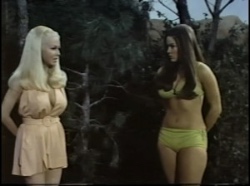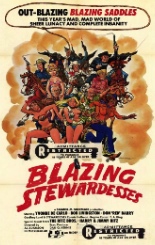
 Al Adamson only made movies like Al Adamson, so why shouldn’t his approach to the almighty sequel be like everyone else’s? Whereas 1974’s The Naughty Stewardesses was a softcore sexcapade, the Blazing Stewardesses follow-up has next to no nudity and, in a veritable 180˚, what little there is doesn’t come from the leading ladies.
Al Adamson only made movies like Al Adamson, so why shouldn’t his approach to the almighty sequel be like everyone else’s? Whereas 1974’s The Naughty Stewardesses was a softcore sexcapade, the Blazing Stewardesses follow-up has next to no nudity and, in a veritable 180˚, what little there is doesn’t come from the leading ladies.
In his final film, former B-Western idol Robert Livingston (The Riders of the Whistling Skull) reprises his Naughty part as Ben Brewster, who invites beautiful, blonde flight attendant Debbie (Connie Hoffman, 1977’s The Van) for a two-week vacation at his gambling-themed Lucky Dollar Guest Ranch. Happily accepting, Debbie brings Barbara (Marilyn Joi, Adamson’s Black Samurai) and new Stew Lori (Dracula vs. Frankenstein’s Regina Carrol, aka Mrs. Al Adamson), who appears to be barely functional as a human being. On the plane ride there, the pilot gets his head stuck in a toilet seat.
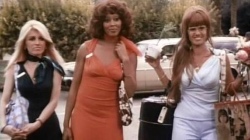 Story has so little to do with Blazing Stewardesses that its “details” — broad strokes they may be — slide right off the mind. That Brewster’s Lucky Dollar cash cow is targeted by masked bandits on horseback is not as important as Adamson getting to pay tribute to the cheap oaters of yesteryear, especially those Poverty Row efforts of his multihyphenate father, Victor. That the property also boasts The Beehive brothel is not as important as getting to cast an aging TV star (Munsters matriarch Yvonne De Carlo) as its madam.
Story has so little to do with Blazing Stewardesses that its “details” — broad strokes they may be — slide right off the mind. That Brewster’s Lucky Dollar cash cow is targeted by masked bandits on horseback is not as important as Adamson getting to pay tribute to the cheap oaters of yesteryear, especially those Poverty Row efforts of his multihyphenate father, Victor. That the property also boasts The Beehive brothel is not as important as getting to cast an aging TV star (Munsters matriarch Yvonne De Carlo) as its madam.
Even Debbie and her girlfriends seem incidental compared to ranch hands Harry and Jimmy (respectively played by Jimmy and Harry Ritz, the then-surviving 66.6 percent of ye olde Ritz Brothers comedy trio (1939’s The Gorilla). Adamson gives the guys the leeway to trot out multiple slapstick routines that, while out of sync with the winking style of humor already established, nonetheless contribute perfectly to the “anything goes” feel of his movie mélange. Hence, a fried egg sandwich landing on the constantly mugging face of Harry. Or was it Jimmy? Doesn’t matter. —Rod Lott

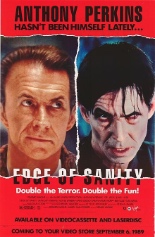

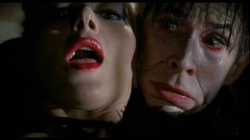

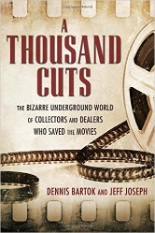
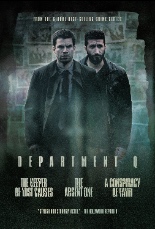
 Based upon Danish author
Based upon Danish author 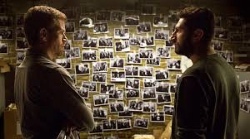
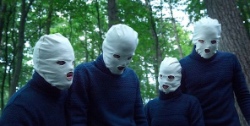
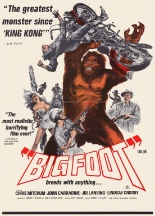
 James Stellar is Bigfoot, “The Eighth Wonder of the World,” as the opening credits of 1970’s
James Stellar is Bigfoot, “The Eighth Wonder of the World,” as the opening credits of 1970’s 